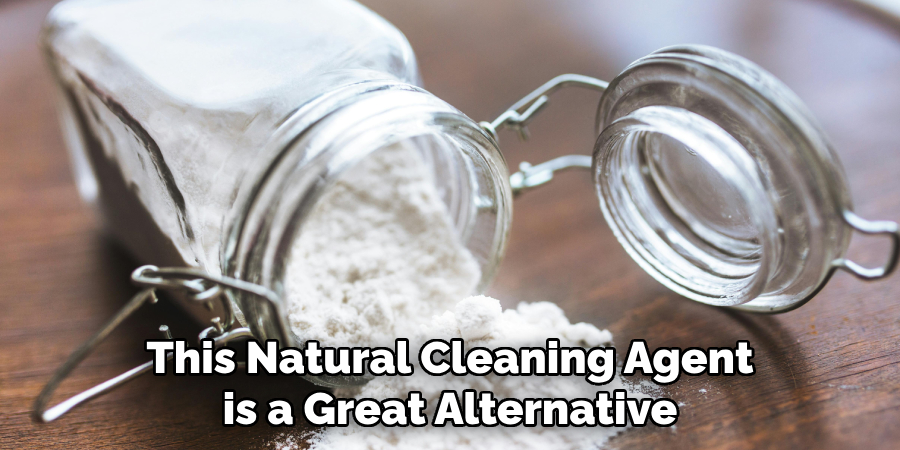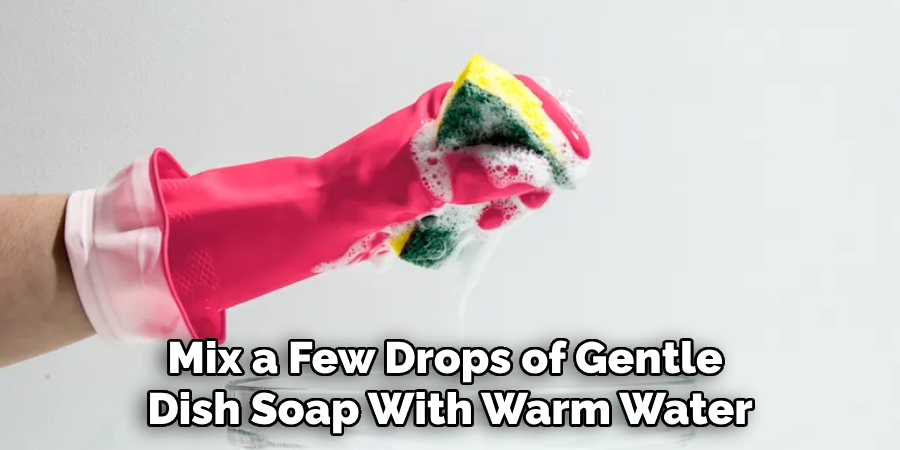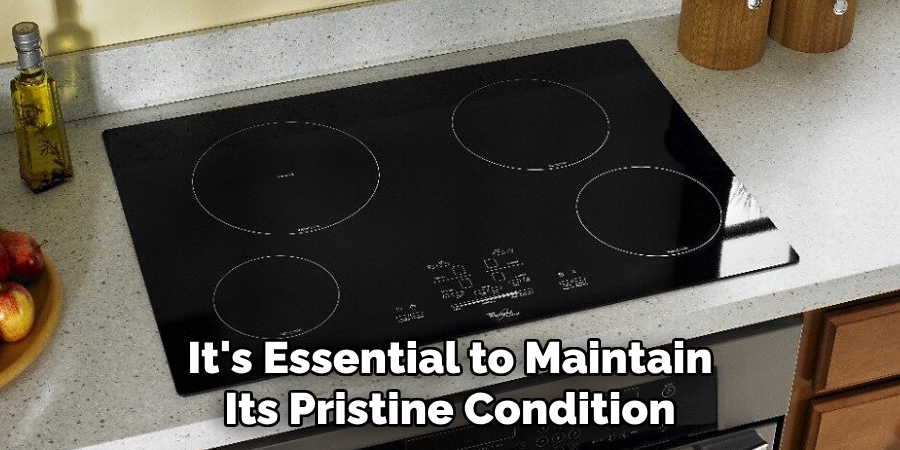Cleaning a burnt porcelain stove top can be a daunting task, but with the right approach, it can be restored to its original shine. Porcelain stove tops are popular for their sleek appearance and durability, but they can suffer from stubborn stains and burnt-on residue if not maintained properly.

Whether you’re dealing with minor spills or tough, caked-on grime, this guide on how to clean burnt porcelain stove top will provide you with effective methods and tips to tackle the job efficiently. Learn how to clean your porcelain stove top without damaging its surface, ensuring your kitchen remains spotless and inviting.
Why is Cleaning a Burnt Porcelain Stove Top Important?
A clean stove top not only enhances the appearance of your kitchen but also plays a crucial role in maintaining its functionality. Burnt food or spills on the surface can affect the burner’s performance, leading to uneven cooking and potential fire hazards.
Moreover, neglecting proper cleaning and maintenance can cause permanent damage to the porcelain surface, making it more challenging to remove stains and burnt-on residue in the future. Regular cleaning will not only keep your stovetop looking sparkling clean but also prolong its lifespan.
Needed Materials
Before diving into the cleaning process, make sure you have all the necessary materials on hand. This will save you time and ensure a thorough cleaning.
Gentle Dish Soap or Specialized Porcelain Stove Top Cleaner:
Both of these options are effective in removing burnt-on residue and stains from porcelain surfaces. If using dish soap, make sure it is gentle and free of harsh chemicals that can damage the surface.
Soft Sponge or Cloth:
Avoid using abrasive materials such as steel wool or rough sponges, as they can scratch the porcelain surface.
Baking Soda:

This natural cleaning agent is a great alternative to harsh chemicals and can effectively remove tough stains on your stove top.
White Vinegar:
A common household item, white vinegar has excellent degreasing properties and is ideal for tackling grease build-up on your stove top.
Water:
You will need water to rinse off the cleaning solution and wipe down the surface.
Microfiber Cloth:
This lint-free cloth is perfect for drying off your stove top without leaving any streaks or residue.
8 Step-by-step Guidelines on How to Clean Burnt Porcelain Stove Top:
Step 1: Let the Stove Top Cool Down
Before starting the cleaning process, ensure that the stove top is completely cool. Attempting to clean the surface while it’s hot can lead to injury or damage to the porcelain finish. Turn off all burners and wait at least 30 minutes until the stove top has cooled down to room temperature.

This waiting period not only protects you but also ensures that cleaning agents don’t evaporate too quickly, allowing them time to work effectively on the burnt residue.
Step 2: Wipe off Any Loose Debris
Once your stove top has cooled, begin by wiping off any loose debris from the surface. Using a soft sponge or cloth, gently remove any food particles or crumbs that can be easily dislodged. This initial step helps ensure that you are not scrubbing burnt food into the porcelain, which could lead to further scratching or damage.
Take care to avoid using abrasive materials, as they can mar the sleek finish of your stove top. Once the loose debris is removed, you will have a clearer view of the areas that require deeper cleaning.
Step 3: Create a Cleaning Solution

Mix a few drops of gentle dish soap with warm water in a bowl or spray bottle. Alternatively, you can use a specialized porcelain stove top cleaner according to the manufacturer’s instructions.
If baking soda is used, mix it with enough water to form a thick paste. Baking soda is an effective natural cleanser and can be used on its own or combined with dish soap for added cleaning power.
Step 4: Apply the Cleaning Solution
Dip your soft sponge or cloth into the cleaning solution and apply it to the burnt areas of your stovetop. Gently rub in circular motions, focusing on one small area at a time.
For tougher stains or burnt-on residue, you can sprinkle a layer of baking soda on the affected area and let it sit for a few minutes before scrubbing with your sponge.
Step 5: Let the Solution Sit
Allow the cleaning solution to sit on the burnt areas for at least 10–15 minutes. This resting period gives the cleaning agents time to penetrate and break down the stubborn stains and burnt-on residue. If you sprinkled baking soda earlier, you’ll notice it starts to work by lifting grime as it begins to bubble.

This step is crucial as it softens the residue, making it easier to remove without excessive scrubbing. During this time, avoid letting the solution dry completely, as this can make it more challenging to wipe away. If needed, you can periodically reapply the solution to keep it moist.
Step 6: Scrub the Surface
Using gentle pressure, begin scrubbing the surface with your sponge or cloth. If dealing with a particularly stubborn stain, you can use a non-abrasive scrub pad.
Take care to avoid using excessive force as it can scratch the porcelain finish. Continue working in circular motions until all burnt residue and stains are removed.
Step 7: Rinse off the Cleaning Solution
Once you’ve successfully scrubbed away the burnt residue, it’s time to rinse off the cleaning solution to reveal a spotless stove top. Dampen a clean cloth with water and thoroughly wipe down the entire surface of the stove top, making sure to remove all traces of the cleaning solution, baking soda, or soap. It’s important to ensure that no residues are left behind as they can attract dirt or create a dull finish on your porcelain surface.
If necessary, you may rinse the cloth and repeat the process until the stove top is completely clean and free of any cleaning agents. Following this, use a microfiber cloth to dry the stove top thoroughly, leaving it shiny and streak-free.
Step 8: Regular Maintenance

Now that your stovetop is sparkling clean, it’s essential to maintain its pristine condition. Regularly cleaning after each use will prevent burnt-on residue from accumulating and becoming more challenging to remove in the future.
Make sure to wipe down any spills or splatters immediately and use a gentle dish soap or specialized cleaner at least once a week to keep your porcelain stove top looking brand new. With proper care, you can extend the life of your stovetop and enjoy cooking on a clean and hygienic surface for years to come.
Do You Need to Use Professionals?
For many homeowners, cleaning a burnt porcelain stove top can be a manageable DIY task with the right tools and techniques. However, there are situations where hiring professionals might be beneficial. If you encounter stubborn stains or build-up that resists your best cleaning efforts, professional cleaners can apply specialized techniques and equipment to restore your stove top to its original condition. Additionally, if you’re unsure about using specific cleaning products or fear damaging the porcelain surface, professionals bring expertise and reassurance.
For those with busy schedules or multiple appliances needing attention, hiring a professional service saves time while ensuring a high standard of cleanliness and maintenance. Ultimately, whether or not to use professionals depends on your comfort level, available time, and the severity of the cleaning challenge you face.
Additional Tips
Use Protective Covers:
Consider using stove top protective covers to minimize spills and stains directly on the surface. These covers are typically heat-resistant and easy to clean.
Avoid Harsh Chemicals:
When cleaning porcelain, it’s essential to avoid harsh chemicals such as bleach or abrasive cleaners. These can cause irreversible damage to the finish and affect the appearance of your stovetop.
Regularly Clean Ventilation Vents:
The ventilation vents on your stove top can accumulate grease and grime over time, leading to unpleasant odors and affecting its performance. Regularly clean these vents with warm soapy water and a toothbrush to prevent build-up.
Don’t Forget About Knobs And Dials:
Make sure to clean the knobs and dials on your stovetop regularly, using a damp cloth or cotton swab to remove any grease or grime. This will ensure that your stovetop remains not only clean but also safe to use.
Use a Soft Cloth for Drying:
When drying your stove top, make sure to use a soft cloth such as microfiber to avoid leaving scratches behind. Avoid using paper towels or abrasive materials that can damage the porcelain finish.
Regular Deep Cleaning:
In addition to regular cleaning, it’s important to deep clean your stovetop at least once every few months. This will help remove any stubborn stains and built-up residue, ensuring that your stove top stays in pristine condition for years to come.
With these tips and proper maintenance on how to clean burnt porcelain stove top, you can keep your porcelain stove top looking like new and enjoy a clean and hygienic cooking experience every time. Happy cleaning!
Frequently Asked Questions
Q: Can I Use a Razor Blade to Remove Burnt Residue on My Porcelain Stove Top?
A: No, using a razor blade can damage the porcelain finish and leave scratches. It’s best to use non-abrasive cleaning methods.
Q: How Often Should I Deep Clean My Porcelain Stove Top?
A: It’s recommended to deep clean your stovetop at least once every few months. However, this may vary depending on your usage and cooking habits.
Q: Can I Use Vinegar for Cleaning My Porcelain Stove Top?
A: While vinegar is an effective natural cleaner, it can etch the porcelain finish over time. It’s best to use gentle dish soap or specialized cleaners designed specifically for porcelain surfaces.
Q: Can I Use a Magic Eraser for Removing Burnt Residue?
A: No, magic erasers are abrasive and can cause scratches on the porcelain surface. Stick to non-abrasive cleaning methods for the best results.
Q: Is It Safe to Use Ammonia on a Porcelain Stove Top?
A: No, ammonia is too harsh and can cause damage to the porcelain finish. Stick to gentle cleaning agents or specialized cleaners for porcelain surfaces.
Conclusion
By following these detailed cleaning and maintenance instructions on how to clean burnt porcelain stove top, you can effectively remove burnt-on stains and keep your porcelain stove top in excellent condition. Consistent care and regular cleaning not only preserve its aesthetic appeal but also ensure a healthier cooking environment.
Remember, gentle cleaning agents and tools are key to protecting the integrity of the porcelain surface. With a little effort and the right techniques, your stove top can remain a standout feature in your kitchen, providing you with a spotless surface for all your culinary adventures.
Check it out to Clean Ceramic Griddle
Specialization:
- Master of wheel-throwing, hand-building, and advanced glazing techniques
- Focus on creating both functional pottery and decorative art pieces
Recognition:
- Celebrated by collectors and art enthusiasts for creating one-of-a-kind pieces that blend artistry with functionality
- Participates in local and national exhibitions, earning accolades for his innovative designs and craftsmanship
Passion:
- Deeply committed to exploring and pushing the boundaries of ceramic artistry
- Continuously experiments with new materials, firing techniques, and artistic concepts to evolve his craft
Personal Philosophy:
- Believes in the transformative power of art, aiming to evoke emotions and connections through his ceramic creations
- Advocates for sustainability in ceramics, using eco-friendly materials and practices whenever possible


